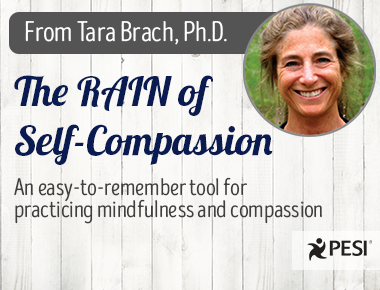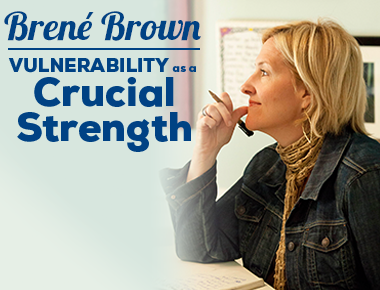Blogs and Free Resources
Here at РЎтттЅКУЖµ, our mission is to provide professionals like you with FREE practical and valuable tools, strategies,
and resources to assist with the great work you do. Find expert tips, helpful worksheets, demonstration videos, CE, news,
and more here. Happy learning!

The RAIN of Self-Compassion
In order to unfold, self-compassion depends on honest, direct contact with our own vulnerability. This compassion fully blossoms when we actively offer care to ourselves. Yet when we’ve gotten stuck in the trance of unworthiness, it often feels impossible to arouse self-compassion. To help people address feelings of insecurity and unworthiness, I like to share a meditation I call the RAIN of Self-Compassion. This easy-to-remember tool for practicing mindfulness and compassion uses four simple steps…

Dr. Bessel van der Kolk Demonstrates the Position of Joy
When the body is frozen in a position of terror, it's not possible to feel joy ... BUT in contrast, when the body is in a position of joy and openness, it's not possible to feel terror. In this short video, Dr. Bessel van der Kolk demonstrates the Position of Joy and shows you how it changes the way you take in emotions.

Lizard Brain: How it impacts EVERY trauma treatment plan
...and what you can do about it
When a child with behavior challenges enters our office, we instantly go into teach mode to tell them how to change their behaviors. Why? Because we don't know what else to do.
But the child's behavior doesn't improve. It's not because they're willful, or bad, or even because they don't care. It's because the lasting impacts of trauma have the children in your practice stuck in "lizard brain." In this short video, I explain why lizard brain impacts every trauma treatment plan you create...

Escaping the Shame Trap
BrenГ© Brown on Vulnerability as a Crucial Strength
Brown has taken the concepts of shame and vulnerability and turned them completely on their heads. In short, she subversively makes shame less shameful, a part of the ordinary human condition. So the question isn’t why shame, but what to do about it.

A Common Supervisory Mistake to Avoid
3 Reasons why it happens and how you can prevent it
In this short video, nationally recognized clinical supervision expert and author Bob Taibbi, LCSW, walks you through the three reasons why this common mistake happens, and how you can avoid it.

What to Do When Clients Cry
In this short clip, therapy author and psychology professor Jay Efran, Ph.D., shares his do's and don'ts list for when clients cry and explains how tears can be a therapist's ally.

What Every Therapist Needs to Know about Working with Gay Male Clients
Many clinicians wish they had more experience in working with gay men and may also have questions that they are too embarrassed to ask others, as if they should automatically have these answers. It is common to experience some uncertainty regarding nuances of gay male life. Increasing your awareness will help you feel more confident with clients, and they will feel a stronger bond with you as a result.

Managing Extreme Emotional Reactions
The Escape Valve Emotions Worksheet
This worksheet can be given to your client(s) to complete on their own or in session. The purpose is to increase awareness into the driving emotions of maladaptive reactions your client(s) are experiencing, or to the individual in a relationship with a reactive individual. Increasing awareness of underlying issues increases the probability of mastering reactions and self-control.

Exploring the Roots of Passive-Aggression
We've all met someone who acts passive-aggressively. We know what it looks like—and we're often the ones doing it—but how many of us know why we act passive-aggressively? Where does passive-aggressiveness come from? What are the roots of passive-aggression?

Improve Insight and Unlock Change Using Metaphors from Daily Life
Metaphors facilitate learning, create a memorable visual, and are usually well received by clients as they communicate a personally relatable point in a non-confrontational manner.

